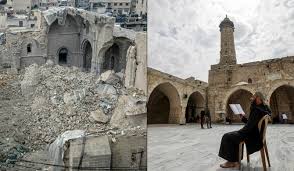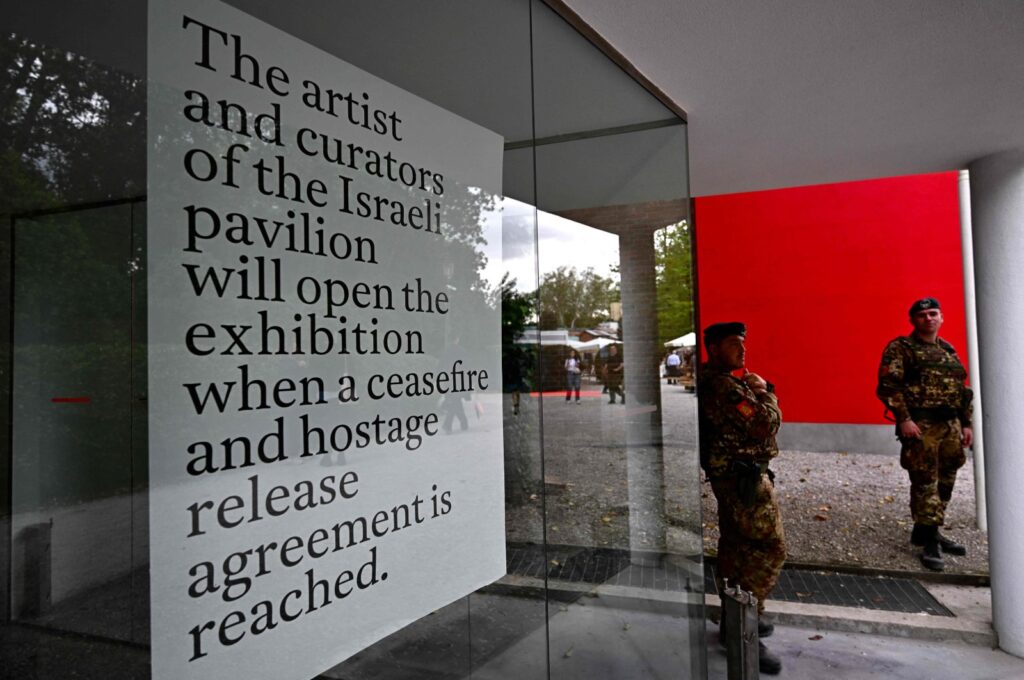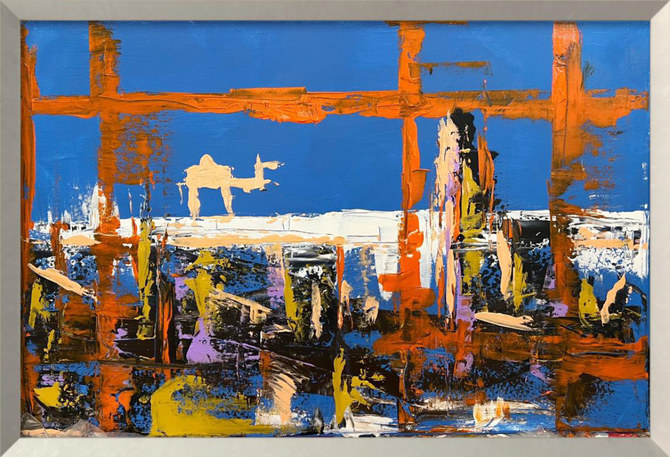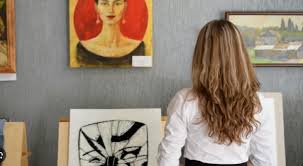
Jonah Kay
PRAGUE : The specter of communism is haunting Prague’s art scene. The city’s first private museum, Kunsthalle Praha, opened in February, marks a move away from the state-funded culture industry that once thrived but has struggled in recent years.
For almost a century, Prague’s artists and curators have relied on the Czech government to fund exhibitions and residencies. Under communism, the state was the sole provider of cultural funds. After communism’s fall in 1989, the city clung to this communist-era relic even as other European art hubs embraced private funding. Prague’s National Gallery is still entirely funded by the state, as are several of the city’s numerous residency programs.
That support structure has made the city particularly appealing to younger artists from elsewhere in Europe. Prague is centrally located near other major art hubs like Vienna and Berlin, so it is an ideal crossroads for Central and Eastern European artists. Czech artists and collectors tend to have close relationships with counterparts in the art communities of nearby cities, such as Dresden and Katowice. “Artists from all over Europe come to Prague. This kind of exchange is the best way of making an arts scene more dynamic,” notes Christelle Havranek, chief curator at Kunsthalle Praha.

Prague is often the first stop for recent art school graduates in France and Germany. State funding also means that there is ample funding for upstarts looking to relocate, and the city’s relatively small arts scene is easier to break into than larger ones in London or Paris. “They’ll come here for two, three, or four years,” says Piotr Sikora, who curates artist residencies at MeetFactory. “The scene is quite welcoming and there are structures in place to help them live here.”
Unlike most other European cities, which have several major museums that share cultural significance, Prague’s museum scene remains concentrated in a single institution. In addition to serving as a steward of the country’s national art collection, the National Gallery is also responsible for championing younger Czech artists and hosting traveling exhibitions.
However, funding cuts have stretched the already overworked institution to the brink. During the pandemic, the Czech Republic implemented an austerity plan that resulted in sharp cuts to its cultural budget. Artists have complained of poor pay and less than luxurious treatment, as well as a significantly reduced acquisitions budget.

Part of Kunsthalle Praha’s proposition for the city is to introduce a private funding model as a means of assuaging the financial woes of the publicly run National Gallery. The museum’s founders and primary donors are Petr and Pavlina Pudil, one of the Czech Republic’s most prominent art-collecting families. Through their family foundation, the Pudils funded the museum’s construction and donated their entire collection to the Kunsthalle on permanent loan.
This approach has allowed the Pudils to bypass many of the constraints publicly funded institutions encounter, including funding limitations and the climate of the political environment. “Public institutions tend to be vulnerable to political influences, which is something we’ve seen here and in nearby countries like Poland and Hungary,” says Ivan Goossen, Kunsthalle Praha’s director. In contrast, Goossen notes, private institutions are only limited by the desires of their members and donors, which allows them to develop a more robust program. Indeed, in 2020, the annual budget for the National Gallery was around $20 million, half of what it cost to build the Kunsthalle Praha.
Like the German kunsthalles, temporary exhibition spaces that lack permanent collections, Kunsthalle Praha is focused primarily on rotating exhibitions featuring works from a variety of collections. Unlike the National Gallery, which mostly centers on Czech art and building out its own collection, Kunsthalle Praha has a lean collection and focuses its efforts internationally.

Kunsthalle Praha’s inaugural show, Kinetismus: 100 Years of Electricity in Art, does just that. Curated by Christelle Havranek and Peter Weibel, the director of the Zentrum für Kunst und Medien in Karlsruhe, Germany, the exhibition traces the history of electricity in art over the past century. Kinetismus pairs works from art history textbook stalwarts like Marcel Duchamp and Man Ray with internationally recognized contemporary names like William Kentridge and Olafur Eliasson to explore how electricity has transformed artistic practices. Drawn from collections around the world, the chosen works lean heavily on live spectacle (lights, sound, physical magnitude) and interactive participation — a clear sign that the museum’s inaugural exhibition is meant to be remembered.
In addition to its global aspirations, Kinetismus seeks to magnify the work of Zdeněk Pešánek, a little-known Czech artist who was a key figure in the country’s early 20th-century avant-garde scene. In 1932, Pešánek was also selected to design a series of sculptures intended to adorn the facade of the Zenger electrical substation, which now houses Kunsthalle Praha. As part of the exhibition, the museum recreated the neon and plastic works, which mysteriously disappeared in the 1930s after being displayed at an exhibition in Paris.

Despite being privately run, artifacts of the communist state are deeply ingrained in Kunsthalle Praha. In the past, the Zenger substation was a crucial element in the city’s electrical grid, powering parts of Prague’s legendary tram system. And like many aristocrats in the former Eastern bloc, the Pudils profited from the wave of privatization that occurred in the 1990s. In Petr Pudil’s case, he acquired the country’s state-owned coal-mining operations.
When plans to launch the museum were first announced in 2019, Pudil’s role in post-1989 privatization came to the fore. After a local art outlet published an investigation into the family’s finances, some artists and curators began to oppose the new institution. Their concerns were rooted in both Pudil’s libertarian ideology, which they saw as detrimental to the local arts community, and his involvement in an environmentally destructive industry. For their part, the Pudil family maintains they have long since divested from coal and now focus on solar and other more environmentally friendly energy sources.
“I think the ’90s really left a bad taste in some people’s mouths. A lot of people really see that period as the core of our troubles today,” explains Tereza Stejskalová, the program director of the Czech branch of Tranzit, a pan-European arts organization. Those troubles — which extend to other art hubs, such as Warsaw, Bratislava, and Berlin — include increasingly unaffordable housing and decreasing funding for the arts.

In Berlin, a city whose rapidly developing art scene has served as a model and a warning for many in Prague, another private kunsthalle project has attracted unwelcome attention. The debate around the Kunsthalle Berlin has similarly focused on the privatization of arts institutions and its effects on the city. Earlier this month, more than 650 artists, critics, and curators signed an open letter denouncing the new exhibition hall.
The shadow of late communism has also affected the priorities of artists in Eastern Europe. A younger generation of artists and curators have grown up in a post-communist landscape that was far wealthier than that of their parents. Greater resources for travel and better funding opportunities have pushed them to foster connections with other art scenes in former Eastern bloc countries. Curator Sikora and others have been instrumental in refocusing attention inward, while organizations like the East Europe Biennial Foundation have formed regional alliances.
“There’s a movement that says: Maybe we don’t need the West as much anymore. Maybe we can connect with other Eastern European countries instead,” states Stejskalová. By offering an internationally focused program that emphasizes Czech artists, Kunsthalle Praha seems determined to walk the line between East and West, as well as past and present.
Courtesy: hyperallergic
The post Prague’s First Private Museum Is Haunted by the Specter of Communism appeared first on The Frontier Post.








